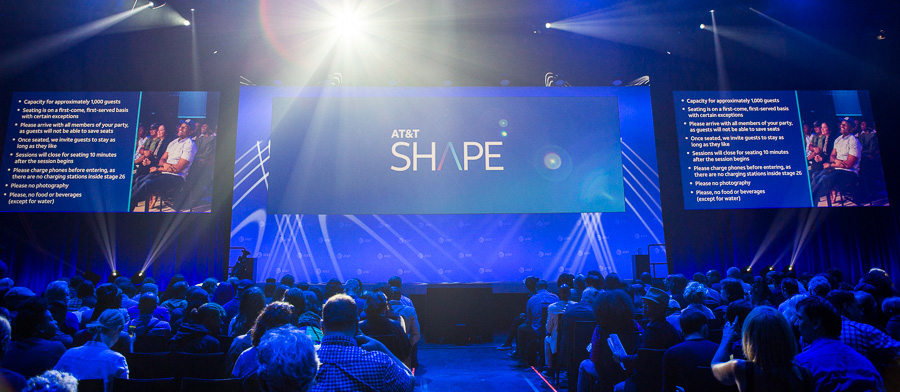Magic Leap Plans to Build Digital Overlays to Create Smart Cities
In theory, virtual reality experiences should be environment-agnostic, meaning it should be immaterial whether they take place indoors or outdoors. This is due to the fact that the VR experience will totally mask out the real-world environment and bring forth a completely new virtual environment so it shouldn’t matter whether you are indoors or outdoors as the environment is not material to the experiences to be seen.However, for practical purposes, the experience almost always occurs indoors within a confined setting.
On the other hand, augmented reality is just the opposite of a VR experience as it incorporates the environment around you into the augmented digital experience. In augmented reality, the external environment around you is significant and will be a defining characteristic of the overall immersive experience. Most of the augmented reality hardware form this experience by relaying environmental cues from practically anywhere into the augmented experience. Creating such a kind of ubiquitous experience will of course entail sacrificing some of the graphical detail in the rendering.
You will not get the same kind of graphical detail in augmented reality as you would in virtual reality if you are using AR smart glasses. With augmented reality headsets such as the HoloLens, it is possible to get the best of both worlds, combining a high a visual detail with the ubiquity of an augmented experience, enabling users to overlay rich visual detail within confined spaces virtually anywhere. Headsets such as the HoloLens are able to pump in significantly more processing power than the smart glasses to create digital objects with rich visual detail. In spite of their varied capabilities, both AR smart glasses and headsets are still primarily targeting the enterprise users and are priced out of reach of the average buyer.

Magic Leap products take the headset approach as opposed to smart glasses. Its AR products are already delivering some mind-boggling augmented experiences like its demo of Game of Thrones and fun shooting games that feature killer robots lurking beyond and which emerge from a real wall which it showcased during the AT&T Shape Conference. During the conference, Magic Leap showcased six experiences in four separate booths. Magic Leap has been working closely with AT&T and the synergy was in display as the Magic Leap AR experiences relied on AT&T’s 5G network for connectivity. Experiences included a concert in AR, three TV streams and Game of Thrones leveraging the Magic Leap hardware and platform.
Entertainment-based applications are fun and popular but there are also AR applications that are more business-oriented such as Mymesys and Mica. One of the best examples has been the collaborative interaction with “Mica” which is an AI-driven agent capable of interacting with users via a collaborative art piece by guiding users to pick objects in a room and a wall collage from cut-outs on a table.
Like Mica, Mymesys is also an AR remote collaborative platform that enables users to see each other in a volumetric video form. The telepresence innovation generated a digital representation of an actual person that you can converse and interact with using objects. The rendering is still crude but this is still the early days and it could be a groundbreaking collaborative technology in the future.
Magic Leap’s novel collaboration apps illustrate the possible and are part of the company’s grand ambition to develop augmented reality. Magic Leap has a vision of mapping out a future where whole cities will be covered in digital reality layered over the physical reality. This could create a surreal reality where we will have digital avatars walking on the streets alongside humans to giant-sized renders of various characters that could serve as targets for multiplayer combats.
This grand vision where entire cities will be blanketed in digital reality is the culmination of the merging of the two approaches to the realization of augmented reality. It also crystallizes from the drive towards an IoT-driven concept of smart cities. The creation of a city environment that is filled with information-rich digital data that can be digitally augmented may actually be the more viable option for cities and municipalities of the future that will be increasingly reliant on IoT to ensure efficient service delivery.
However, such a future is still a long way from realization. Magic Leap itself has been fiddling with its hardware to get the best approach that would not only be affordable but also consumer-friendly. Its current technology is simply too conspicuous and costly to see mass adoption and everyday use. The company has intimated that its next generation of hardware will address the pain points of the current devices by lowering the prices and reducing the size of the hardware.
https://virtualrealitytimes.com/2019/07/10/magic-leap-plans-to-build-digital-overlays-to-create-smart-cities/https://virtualrealitytimes.com/wp-content/uploads/2019/07/ATT-Shape-Conference-600x261.jpghttps://virtualrealitytimes.com/wp-content/uploads/2019/07/ATT-Shape-Conference-150x90.jpgAugmented RealityTechnologyIn theory, virtual reality experiences should be environment-agnostic, meaning it should be immaterial whether they take place indoors or outdoors. This is due to the fact that the VR experience will totally mask out the real-world environment and bring forth a completely new virtual environment so it shouldn’t matter...Sam OchanjiSam Ochanji[email protected]EditorVirtual Reality Times - Metaverse & VR
